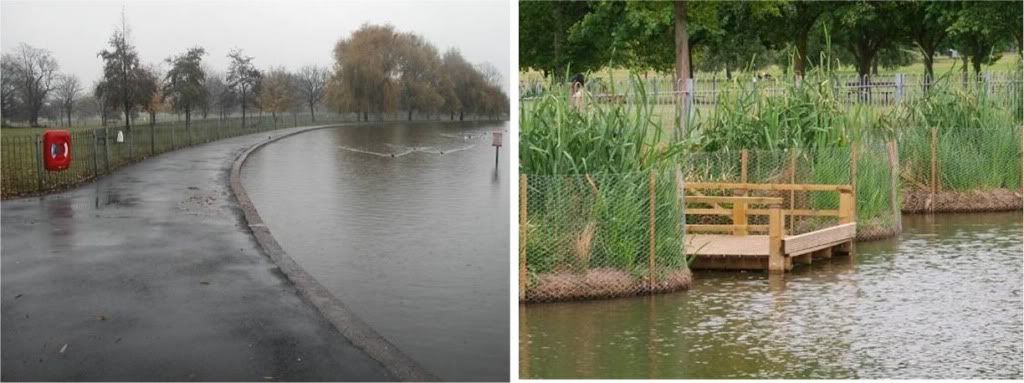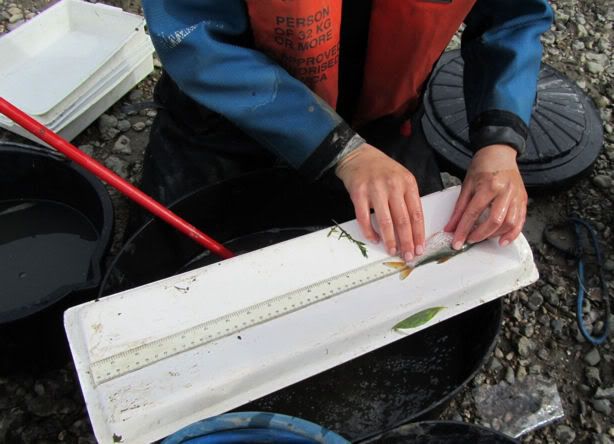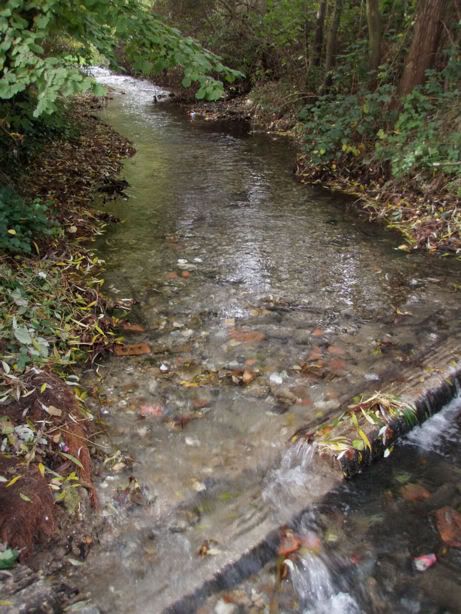Behind the scenes with the Thames fisheries team
Earlier this year, the Thames Anglers’ Conservancy (TAC) attended an EA fish survey on the Thames.
In conversation with a fisheries officer, a fellow angler, we learned how he’d developed one of the tributaries he looks after. He had worked for years to improve the river. He had installed eel passes, enhanced fish habitat, conducted fish surveys and stocked this particular Thames tributary every year with hundreds of dace, roach and chub.
Then one day his phone went. The person on the other end told him of a pollution spill into his river. When he heard about the subsequent fish deaths, habitat destruction and years of work ruined, he actually wept. It was evident the passion he has for his job, the Thames and its tributaries.
These are the sort of people us anglers want working on the rivers, so the TAC asked to go behind the scenes to find out more about them.
The TAC spoke to Tanya Houston, one of the Thames fisheries officers.
Tanya, what are your responsibilities?
The fisheries team that I work in is responsible for maintaining and improving fisheries in South London and the Tidal Thames. This includes working on habitat enhancements, improving access for anglers, dealing with enforcement and fish passage issues.
How many people in a regional fisheries team?
The South East Area of the Thames Region covers from Reading to Southend. The two teams have thirteen members of staff, three of which are the Areas enforcement officers and two Technical Specialists.
What area does your team cover?
The team based at Frimley covers the freshwater Thames (to Teddington) and all southern tributaries from the Loddon to the Mole.
The South London Team covers from the Hogsmill to the Ravensbourne southern tributaries, the Marsh Dykes and the tidal Thames out to Southend.
What qualifications or expertise is a fisheries officer required to have?
This is difficult to answer; using my team we have a range of qualifications from a Masters in Aquatic Management, Diplomas in Fisheries Management, Degrees in Agriculture and relevant work experience. Enforcement officers will often have previous experience in enforcement.
Please could you give examples of typical fish related work you do?
A good example of the work that we do would be Clapham Common Restoration. A significant fish kill in 2007 due to blue-green algae highlighted the need for work to happen quickly. We put some money towards a feasibility study in partnership with the London Borough of Lambeth and the Clapham Angling Preservation Society.
Due to the work and liaison we had with the London Borough, they came back to us the next year to put the preferred option into practice, again a contribution from us. The project was managed by the borough and involved rescues of many fish including dozens of carp, profiling of the bed, fishing platform installations and margin planting.

Clapham Common – before and after
At the time of writing, the project is in its final stages of phase 2. In December, 800 juvenile tench, roach and crucians were stocked into the pond from our Calverton fish farm and the remaining carp are due to come back when we can be sure the icy period is over.
What type of work do you do on the main Thames river?
On the Thames itself, one of our jobs is to survey fish populations twice yearly at several points, including Richmond, Kew, Battersea, Greenwich and Thurrock by employing Seine and trawl nets. We measure and record every fish netted, so we can take a snapshot of fish stocks, which helps assess the health of the river.

A dirty, cold and wet job but every fish is measured and recorded
And what type of work do you do on the tributaries?
A good example of work on Thames tributaries is our improvements to fish passage and migration. Our survey work on these rivers has shown that obstructions to fish migration – all species – can have a big impact on fish populations. We’re currently involved in some great projects to provide improved passage for eels on many of our own weirs. We are also using funds we secured from DEFRA to build fish passes on the Wandle and the Loddon.

A weir ‘notched out’ to aid fish passage on the Wandle at Butterhill Mill. The Wandle has been well known over the years as a trout river, so it is essential man-made structures such as weirs don’t restrict trout passage upstream
Are you able to give examples of any stockings you have done on the Thames or its tributaries over the last year or two?
We stock South London’s rivers every year as they are still recovering systems. The idea is that eventually with habitat improvements we should be able to reduce this in the future and have a self sustainable population. The Ravensbourne, Pool, Hogsmill, Beverley Brook and Wandle all get several hundred to a thousand fish from our Environment Agency fish farm in Calverton annually.
As examples that the TAC witnessed this year, the Hogsmill this year received 200 juvenile chub and 500 roach and the Beverley Brook 400 chub and 250 dace.
We are also always on the look out for any still waters that could accommodate crucian carp without risk of cross breeding, or still waters with restoration projects that need a helping hand.
That is great work you do. What are the things that give you most satisfaction in your job?
Angling participation days are always very rewarding, seeing fresh new anglers coming to have a go. It has got to the point in South London that we have regulars that return every year!!!
Also completing restoration or access projects, the most satisfying are those where clubs find themselves leading projects forward when they first thought they couldn’t do it.
(From spending time with them out in the field, the TAC learned the fisheries team also gets much satisfaction from seeing the juvenile fish they’ve stocked with their own hands grow to a size where they can spawn and perpetuate stocks naturally).
So what are the biggest frustrations in your job?
Probably that we have so much to achieve in so little time! We make good progress but there is still so much that still needs to be done.
It is also frustrating that the anglers don’t always see the work we do as a positive contribution from their rod licence and complain that we aren’t out on the river bank enough.
** The TAC, in line with many other Thames anglers, would like to see more enforcement officers employed to check licences. Although they can call in backup from officers in Essex and Kent (Anglian and Southern regions), there are 7 full time fisheries enforcement officers covering north and south banks of the Thames Region.
However, with limited resource, the fisheries team has had success in stopping illegal netting and long-lining operations. Although they do check licences aswell, on balance, we think their time is well spent preventing poaching with nets and long-lines, as the potential for fish loss is far greater.
The team on the tidal Thames has a specialised enforcement workload regulating commercial nets purely within the river itself (there will be other officers carrying out freshwater duties landside down to Southend). The team also collaborates with the Port of London Authority, the Met Marine Police and the Sea Fisheries Authority to carry out joint enforcement work **
Tanya, is there an aspect of the job your team are particularly successful in?
This team has a particular strength in influencing planning applications and developers on access and fish passage issues. We have found that in such an urban environment it is often the most constructive way to improve areas – second only to partnerships with local landowners like the London Boroughs.
With these partnerships we are able to get massive projects done by only contributing only a fraction of the budget from rod licences. For example, the Clapham Common project we spoke about earlier was funded with £55,000 from Lambeth Council, £26,000 from us through rod licences, and £20,000 from a planning agreement from the Clapham Common South Tesco development.
You’re obviously improving fish habitat and increasing fish stocks. What can we do to help you?
We have got a good relationship with the TAC and we see it as a very valuable way to show anglers what we do with the rod licence, other than to check the fishermen have them. This I think is very important as although we do promote this work in the press it seems to pass by many anglers.
Having club members aware of our actions means that they will see what it is they are contributing towards, and hopefully feel we are doing a good job.
Thanks Tanya. We hope from this interview Thames anglers will feel the river is in good hands. We also now have a better idea of the range of work you do and why you can’t always be on the bank checking licences.
Now, if we may, we’d like to tap some of your knowledge about Thames fish!
Steve Holmes – Thames Anglers' Conservancy
This entry was posted in
News and tagged
Environment Agency,
TAC. Bookmark the
permalink.




